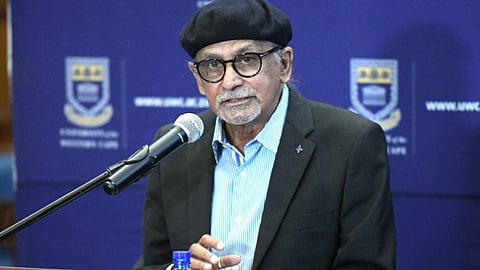Rashid Lombard: The jazz of resistance through a photographer’s lens
Key topics:
Captured Mandela’s release and South Africa’s first elections
Blended photojournalism with jazz to document Black joy and struggle
Left behind 500,000 images chronicling apartheid and its aftermath
Sign up for your early morning brew of the BizNews Insider to keep you up to speed with the content that matters. The newsletter will land in your inbox at 5:30am weekdays. Register here.
Support South Africa’s bastion of independent journalism, offering balanced insights on investments, business, and the political economy, by joining BizNews Premium. Register here.
If you prefer WhatsApp for updates, sign up to the BizNews channel here.
The auditorium doors will open for BNIC#2 on 10 September 2025 in Hermanus. For more information and tickets, click here.
By Siona O'Connell

